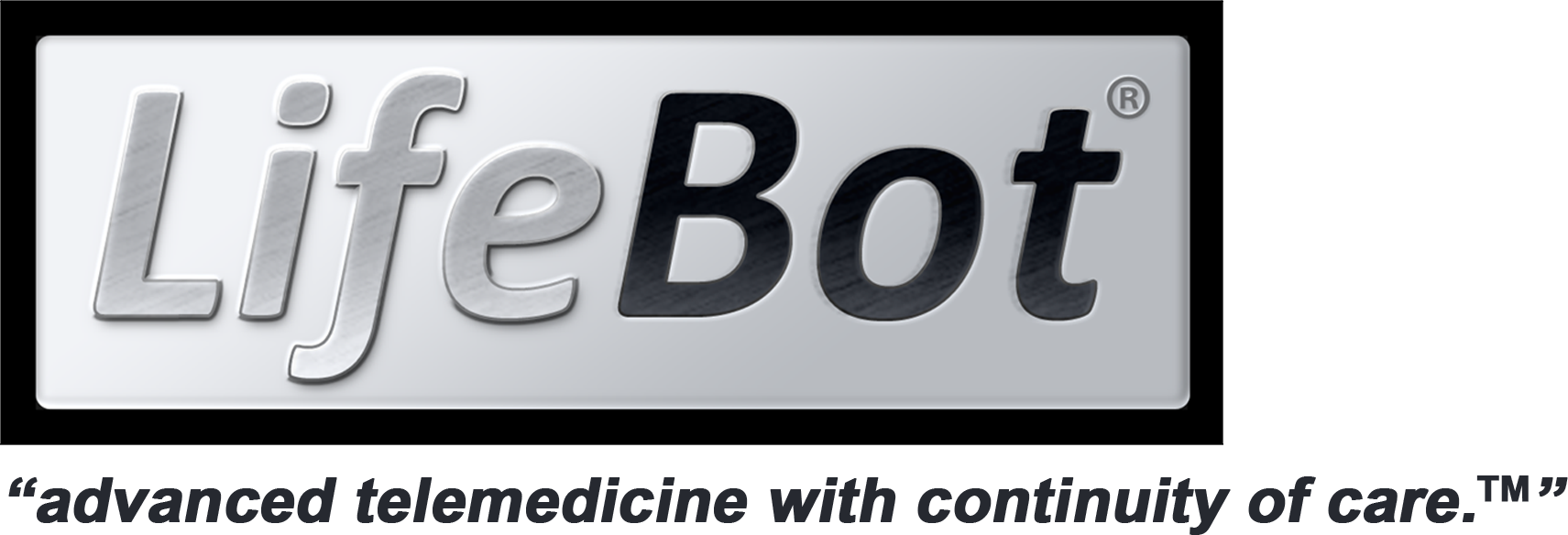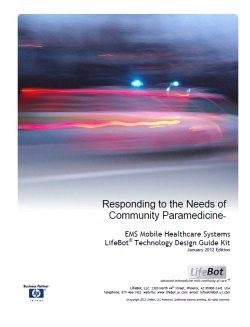
What is Odyssey?
LifeBot® Odyssey is clinical decision support software that significantly lowers the time required for patient assessments substantially reducing costs. Odyssey is fast, user friendly, clinically thorough and safe; it also improves record keeping. Odyssey products are proven for many years to improve the efficiency of clinical resources, reduce risk and ultimately save money. It enables rapid accurate decisions in just minutes and intelligently guides encounters while enforcing standards of care. Accurate patient assessments may be performed in a fraction of the time.
The diversion of non-emergency calls to a qualified nurse will save the Philadelphia Fire Department (PFD) as much as $2.5 million annually by increasing productivity and reducing the wear-and-tear on vehicles and equipment, as well as reducing stress on personnel. City of Philadelphia Controller Download the Report
The Most Advanced Decision Support:
Odyssey may be utilized at the priority dispatch level, in emergency departments, clinical patient non-emergency calls centers, and in telemedicine tele-hub operations. Extremely successful, it now occupies more than sixty percent of the market for General Practitioners in the U.K. handling more than 18 million calls over a 15 year period without any major legal issues. No other clinical decision support software can make these claims. Average patient assessment times may be as little as 5 or 6 minutes, virtually eliminating ‘over-triaging’. While simultaneously increasing efficiencies, it significantly reduces the risks associated with medical errors.
East Midlands Ambulance Service is saving more than $11 million annually using Odyssey. Watch this video… about more than 10 years of successful use.
Odyssey clinical decision support systems enable a vast synthesis of clinical knowledge relevant to the patient’s needs to be available to the user instantaneously – at the simple click of a mouse.
An early report on teletriage from Dallas EMS indicated a reduction in nonemergent transports of 20-30%. Now teletriage systems are being introduced in Seattle, Richmond, and Houston. A report by the Controller of the City of Philadelphia projects savings of $2.5 million annually for city EMS services through the deployment of nurse teletriage systems. view more..
Nonemergent medical 911 calls are routed to a teletriage call center to prioritize dispatches for much increased efficiencies. Resources are redirected to true emergencies decreasing response times and significantly increasing the quality of patient care. This may significantly reduce hospital ED over-crowding and over-utilization. This may also substantially reduce the associated costs to engine company and law enforcement responders.
Community Paramedicine Guide:
 |
Responding to the Needs of Community Paramedicine – EMS Mobile Healthcare Systems
LifeBot Technology Design Guide Kit
This is a comprehensive guide to the deployment of the Mobile Primary Care Unit (MPCU) for delivering primary care via EMS providers. This guide also is a detailed presentation on EMS Telemedicine and the prospects for using these technologies for substantially reducing healthcare costs.
Crucial to these systems is the use of Decision Support Software (DSS) to triage callers at the dispatch, call-center, and in actual field operations to determine if a call or a patient is an actual emergency (emergent) or non-emergency (non-emergent). Also reviewed is the crucial nature of EMS Telemedicine to “look inside” and acquire critical physiological data and transmit this to hospital physicians and specialists to save lives.
Odyssey Paramedic with DREAMS™:
Now Odyssey is being integrated into the military developed DREAMS™ telemedicine system. This means assessments my be done in the field in pre-hospital applications. So Odyssey may be used in ALS MICU Ambulances and the latest Mobile Healthcare (MPCU) systems.
For more information about DREAMS™ Telemedicine, click: View DREAMS System
Documentation:
- Download Teletriage EMS Brochure
- Download Prison Teletriage Brochure
- Download Teletriage Workstation Brochure
- Download Telemedicine Workstation Brochure
Reference Materials:
- Telephone Nurse Triage System Reduces Use of Emergency Department by Nonurgent Patients, Reducing Wait Times, Length of Stay, and Patient Walkouts Midland Memorial Hospital -The evidence consists of post-implementation data on the percentage of callers triaged to other care settings and pre- and post-implementation comparisons of various emergency department metrics, including volume of nonurgent patients, wait times, length of stay, patient walkouts, and patient satisfaction. view more…
- Tele-Nursing: Lifting the Burden on Emergency Medical Services Controller of the City of Philadelphia – April 2009 : Estimates that the city may save $2.5 million annually implementing teletriage systems. view more…
- Call Screening in Dallas: Triage with Care Journal of Emergency Medicine (JEMS), February 1983 “Dr. Clawson calls the nurse screening approach the “Cadillac” of selective dispatch philosophies. We asked Leilani Starks, RN, coordinator of the Dallas Fire Department’s call screening program, to describe the system there and the special challenges it presents.” view more…
- Telephone Triage: The Quiet Revolution in Canada O’Hanley, Telemedicine Journal and e-Health – March 2004 : “The computer revolution has for almost a decade been central to a nursing revolution known as telephone triage. The registered nurse can be virtually out in any community to help patients and their caregivers make informed decisions on appropriate emergent intervention and the venue commensurate with the determined level of necessity.” This Canadian system handles 100,000 calls a month with 300 nurses. It has handled over 7 million calls for over 10 years without any significant patient legal issues. view more…
- ED Telephone Triage: Gridlock or Access Sheila Wheeler : “Timely and appropriate access to care in the emergency department (ED) setting is a problem which has reached crisis proportions. Overcrowding (too many clients) and overutilization (innapropriate and unnecessary ED visits) impede access to healthcare services, sometimes barring those who genuinely need emergency care.” view more…
- The Case for Publicly Funded Medical Call Centers Schmidt, Hertz, : “60% – 80% of pediatric ED visits are nonurgent or unnecessary (an office visit the next day or self care would be safe and effective). The unnecessary visit rate is lower for adults.” view more…
- The Future of Telepractice Bio-medicine, Sheila Wheeler, October 2006 : “…in the future, many will practice from large national call centers. In these “mega call centers”, nurses may serve as the coordinator from the “hub” of an integrated computer and phone system — a network of phone-based health care services, calls ranging from crisis level to information-based and from telemedicine and internet based service to “POTs” — “plain old telephone” lines.” view more…
- NASEMSO Input to NHTSA Strategic Plan – Docket No. NHTSA-2009-0171 January 4, 2010, Docket from National Association of State EMS Officials, mentioning LifeBot® EMS Workstation by name, that addresses major issues in safety for EMS and first responders. Obviously, if EMS emergency responses may be lowered significantly, as indicated by the teletriage documents above, then this safety for providers may be substantially increased. Costs would not only be reduced for EMS, but law enforcement responders as well. view more…
- Tele-Nursing – A Revolution? Ian St. George and Michelle Branney, Healthline, “The coincidence of sophisticated software and critical mass of skilled nurses sets the scene for innovation… Telenursing should become a career path for nurses…” view more…
- Telemedicine and Remote Monitoring Could Save $197 billion Kaufman Foundation – January 2010 : Report by Kauffman Foundation and Brookings Institute economist Robert E. Litan. “Remote monitoring can spot health problems sooner, reduce hospitalization, improve life quality and save money,” The United States economy could save $197 billion over 25 years by implementing policies that support remote monitoring and other telemedicine technologies. A failure to encourage healthcare providers to take advantage of telemedicine would cut the projected savings by almost $44 billion view more…
- Survey: Consumers psyched about telemedical remote monitoring “A new survey by PricewaterhouseCoopers concluded that almost three-fourths of U.S. consumers say that they’d use telemedical services, which they defined as remote monitoring to track their condition and vital signs…. Researchers concluded that half of consumers would be willing to get healthcare online or through other computer technology instead of face-to-face care for non-emergency visits.” view more…
- Broadband Internet’s Value for Rural America. USDA – Economic Research Report – August 2009 “The cost of not having telemedicine thus was estimated to average $370,000 per annum for the 24 rural hospitals. Communities with larger hospitals (2,000 or more patient encounters per month) would be forgoing over $500,000 per year if telemedicine were not offered.” Obviously for groups of hospitals or large provider organizations this means millions in savings regionally. view more…
- Predicted utilization of emergency medical services telemedicine in decreasing ambulance transports. Prehospital Emergency Care, Haskins, Mayrose – 12/2002 “Use of EMS telemedicine could result in an approximately 15% decrease in ambulance transports when it alone is added to the prehospital care provider’s armamentarium. Emphasis for implementation should be placed on younger patients and an identified subset of chief complaints conducive to management using telemedicine.” view more…
- National Telemedicine Initiatives: Essential to Healthcare Reform Telemedicine and eHealth, American Telemedicine Association – July 2009 “…telemedicine offers significant opportunities to address the issues of inequities in access to care, cost containment, and quality enhancement.” This paper by top telemedicine authorities illustrates where substantially more savings may be realized beyond the above references. view more…
- JAC Report to Congress and the 9/11 Commission 12/2002 Kevin Martin, FCC Chairman – February 4, 2008 “In order to receive the benefits of telemedicine, electronic health care records,and other healthcare benefits, health providers must have access to underlying broadband infrastructure.” This report and recommendations from some of the nation’s most prominent officials also recommends IP based communications. The LifeBot® EMS Workstation is the only such IP based VOIP workstation available. view more…